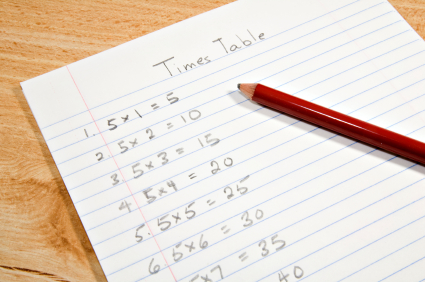As a primary or elementary teacher, you are probably not a specialist in mathematics. As the old adage goes, “high school teachers teach subjects; primary and elementary teachers teach students”.
As a result, knowing how to teach students mathematics really well may be something you find a challenge. If so, this post may help you.
1. Focus First on the Mathematics
This is the biggest, most important factor in getting mathematics teaching right. If you don’t nail the mathematics and put it at the center of all your math lessons, it will be very difficult to capture students’ interest, and impossible for them to really understand the topic. This step is needed right at the beginning, at the planning stage.
For example, if the topic is “symmetry in flat figures”, you would teach the terminology of symmetry, the two different types of symmetry, correct terminology and mathematical ways to analyse symmetry (such as the angle of rotational symmetry).

If you lack the content knowledge in a topic, I would go to Wikipedia for a quick brush-up on what the basic math is. As an encylopedia, rather than a blog or social media site, Wikipedia will have succinct summaries of all the topics you are likely to teach, and is highly likely to have the facts correct.
2. Work Out What Mental Processes Students Will Need
The second major step in planning a great math lesson is to consider the student. What processes will they need to practise for this topic?
For example, if you are teaching number facts, the standard we are aiming for is instant recall of every fact. So the mental processes needed are memorizing the facts in the first place, then recalling them from memory.

Note that with this approach, there is no argument about whether students need to remember all those facts or can “invent” ways to come up with them when they are needed. The bottom line is that number facts are needed for just about every math topic, and using up precious brain power (and time) to work them out when needed is just too inefficient.
3. Use the Best Methods to Connect Math to Mental Processes
Lastly, you need to find the best methods you can to truly connect students and their thinking to the mathematics. This has a couple of important components:
- Make the mathematics the primary focus of the lesson. In other words, it’s not about games, exercises, routines, or any other activity or behavioural focus.
- Don’t focus on making math “fun”; true mathematical activity requires attention to detail, discipline and following rules. Students will experience satisfaction from understanding the mathematics and the processes needed to reach solutions and correct answers, but “fun” is the wrong focus.
- Doing mathematics involves a good deal of mental effort and mental processes. It is essential that your students are engaged in thinking for themselves, using a variety of mental processes including memorization, visualization, mental computation, exploring options, testing hypotheses, following logical connections, holding pieces of information in the working memory while applying mathematical processes such as operations, etc.
I have decided that I will no longer help teachers to inject fun, simplicity, tricks or cute pseudo-math processes in an attempt to buy students’ affection. (As an aside, I am working on a new product about fractions. We brainstormed titles for the series, and rejected “Fun Fractions”, “Fantastic Fractions”, “Spectacular Fractions” and the like because they send entirely the wrong message.)
What do you think? If you are a primary/elementary teacher, does this article help? Does the above advice match your own practices? Please leave a comment below!
Graphic Credits:
- Primary student group: © iStockphoto.com/Chris Schmidt
- 5x Table: © iStockphoto.com/Dougall Photography

I really appreciate your statement: “I have decided that I will no longer help teachers to inject fun, simplicity, tricks or cute pseudo-math processes in an attempt to buy students’ affection.” YES!!
To make math “fun” already implies that math in itself is boring, unworthy of students’ precious time and attention. I cringe when I see teachers doing sing-and-dance or dog-and-pony shows in math and think they should get a prize medal.
I have a question about your #1 above. Yes, I agree that the math is at the heart of the lesson (of course). I wonder if you have to START a lesson with the vocabulary as you say, “… is needed right at the beginning, at the planning stage.” I’d be curious to learn what kids call “symmetry” if they see symmetry as defined. I’m afraid if I inject MY vocabulary on to their natural observations, I might lose that connection to their world. What do you think?
Thanks, Peter!
Fawn, you’re right, of course. I should have been clearer. 🙂
I think that mathematics has to come first in the teacher’s mind, in the planning, when thinking about the foundations of the lesson. No watering down, get serious about the actual, real, honest to God mathematics that are at the heart of the topic at hand.
Then, when teaching, give the students experiences to explore and talk about the mathematics in their own words, on their terms. In other words, they need to own the math themselves, and make sense of it for themselves. But what they should be making sense of is the math, not some “exercise” or “trick” or game.
I need to write another post about introducing the language; this one (in my head, at least) is about the intellectual core of the lesson, which the teacher has to own before setting out to plan and to teach the next generation of mathematical thinkers.
Is that clearer? I’m in new territory here, trying to capture what I feel is so important about teaching math properly, and putting into plain language to hopefully capture the attention and the hearts of primary / elementary teachers.
(I must be losing my mind, thought I’d left a 2nd comment here, but maybe I was just thinking about it in my head and didn’t have a chance to write it down.)
Yes, that’s very clear, Peter. Kids are smart and they will ask questions. And as teachers we need to be grounded enough in the math and be prepared to hear those questions and reply in ways that still allow the student to explore and hopefully seek his/her own solution. I find it challenging sometimes to give just enough hint without robbing the student of valuable critical thinking.
Sometimes I will offer a trick or shortcut AFTER I hope the kids have understood the concept; one in particular is showing them how to use the “slide” to find GCF and LCM.
Fawn, you probably did reply, but my spam filter caught it. Sorry if that’s what happened.
I’m not familiar with the “slide”. Or I’ve forgotten what it is.
I was searching for something to help with summer schooling for my daughter. I found them easy to follow and intuitive, loved the relationships between numbers explanations. It make it very easy to grasps. Highly recommend classroom professor to any Mom and teachers!!!